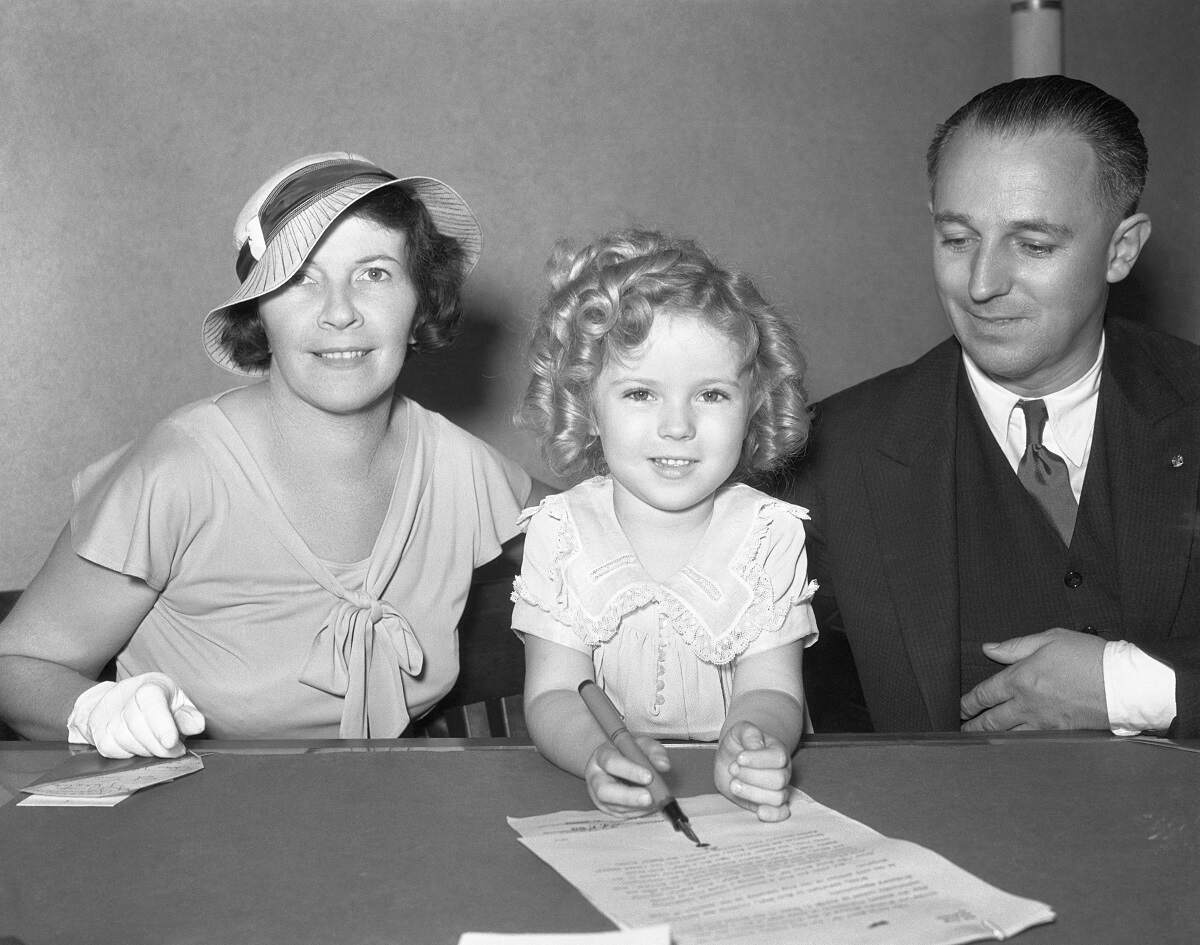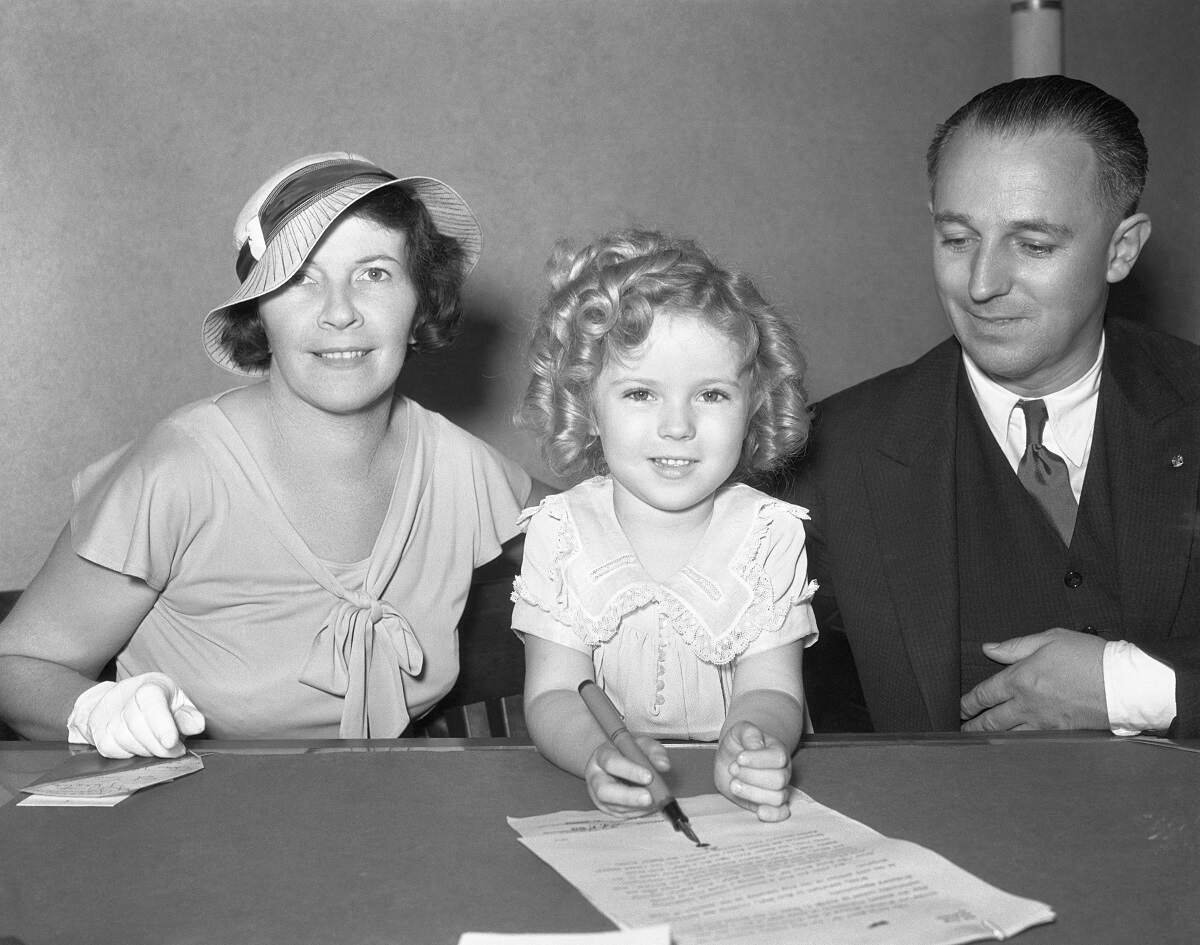
Shirley Temple Only Got 10 Percent of Her Weekly Earnings at Fox — Her Parents Took the Rest
While most kids were going through elementary school, Shirley Temple was becoming the biggest movie star in America. Her talents as a performer and prepubescent charisma delighted audiences of all ages. And Fox leveraged Temple’s image to cultivate a brand around the actor in a way that was rare for the time.
Temple made a lot of money for the people around her. But she didn’t get to keep most of it. Her parents took control of the majority of her earnings. And their mismanagement of Temple’s funds resulted in the loss of millions of dollars.
Shirley Temple was an icon of 1930s cinema
Temple was only three when she made her first steps into the entertainment industry. Her parents Gertrude and George took her to classes at Meglin’s Dance School in Los Angeles. Temple’s performances in the class caught the attention of Charles Lamont, a casting director for Educational Pictures, who invited her to an audition. Temple signed a contract with the studio in 1932 and became part of the cast of Baby Burlesks, a series of bizarre ten-minute satirical shorts that used preschool children in adult roles.
After her breakout performance in the 1934 musical Stand up and Cheer!, Temple quickly shot to the top of the box office charts. Her singing and dancing in films like Curly Top, Heidi, and The Little Princess were so magnetic that the Vatican felt compelled to investigate the rumor that Temple was actually an adult dwarf and not a real child.
Temple’s public persona didn’t translate to adulthood. She retired from acting in 1950 and spent most of her professional life working on behalf of the Republican Party in various roles.
Shirley Temple’s parents lost most of her fortune

Temple’s star power helped 20th Century Fox stave off bankruptcy and the studio rightly awarded her with a considerable salary for the time. At her peak, the actor’s contract paid her $1,000 a week (about $22,000 when adjusted for inflation), gave her mother a $250 ($5,581) stipend as her hairdresser and personal coach, and provided additional bonuses of $15,000 ($334,000) for each movie she finished.
According to the book Off the Charts: The Hidden Lives and Lessons of American Child Prodigies, by Ann Hulbert (an excerpt is available in The Atlantic), the only person who made more money in Hollywood than Temple was producer and co-founder of MGM studios Louis B. Mayer.
But being the breadwinner at such a young age also emboldened the adults around Temple to exploit her naivety for their own gain. The child star only got $20 from her Fox contract, with the rest of her money split between the studio and her parents. Temple’s trust in the latter proved to be financially disastrous. According to Business Insider, the Temples lost nearly $3 million dollars because George, who was a bank employee, didn’t put Shirley’s earnings in a court-ordered trust.
The star didn’t learn of this until she was an adult, but she claimed to take the news pretty well. In her autobiography Child Star, Temple said she “felt neither disappointment nor anger” when she discovered this mistake.
Shirley Temple’s home during the peak of her career remained significant years after she left it
Temple’s ability to influence spending habits extended to her childhood home. Her family only lived in the small Santa Monica bungalow until Shirley was five, but the house’s status as Temple’s first home gave it a value that sustained over decades.
The estate sold for $2.5 million in 2014. Although the home underwent significant changes since the early ’30s, its famous former residents still played a role as a selling point.
Temple was not much of a public figure in her later years (coincidentally, she died a few months after the sale). But the power of her legacy stayed strong until the very end.



